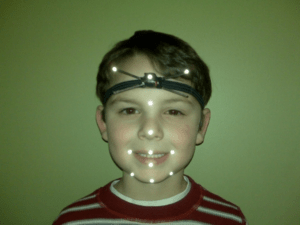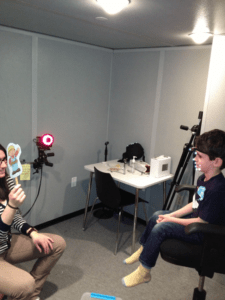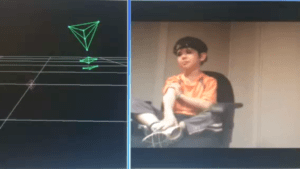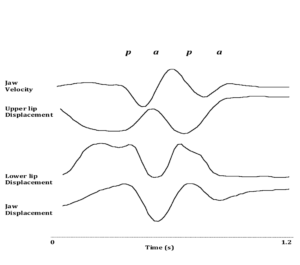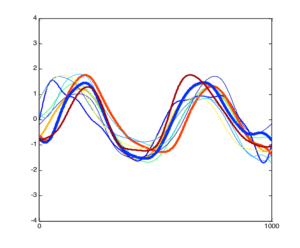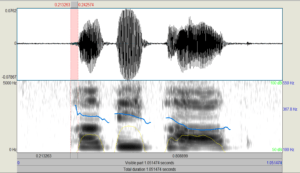The Motor Speech Lab uses multidimensional methodologies to investigate speech sound production in children and adults. These approaches include kinematic and acoustic methods which provide an opportunity to capture changes in speech motor control that may not be perceptible. We combine these methods with transcription analyses of the spoken speech signal. Our studies have included children, ranging from 18 months through adolescence, and adults.
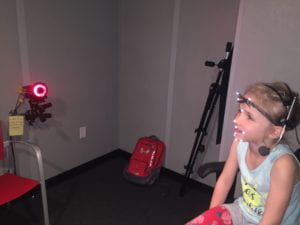
We have a number of exciting projects ongoing in the Motor Speech Lab. Please see below for current projects, in addition to more information regarding how we collect and analyze data.
Here’s a look at how we study speech production….
We collect kinematic and acoustic data in a sound-proof room. Our participants wear very small reflective markers on their face and are asked to perform speech (saying words/phrases/sentences) and/or non-speech (facial movements) tasks. Using an optical tracking system, we track movement of the markers in three dimensions.
This is an image of the markers in Vicon as compared to the child wearing the markers. Kinematic data is extracted based on the three-dimensional positioning of the markers in the movement space.
This image represents lip and jaw movement for production of “papa.” We measure a range of movement parameters including velocity, duration and displacement of the speech articulators.
This image represents jaw movement variability (spatiotemporal index, STI, Smith et al., 1995) over multiple productions of the word “papa”. The more similar the lines, the less variable the movements.
Acoustic data is simultaneously collected using a microphone worn either on the head or on the speaker’s shirt. These data provide a window into speech motor control that is associated with consonant and vowel production, such as articulatory shape and speech timing. Below is an acoustic waveform that represents the spoken speech signal.
